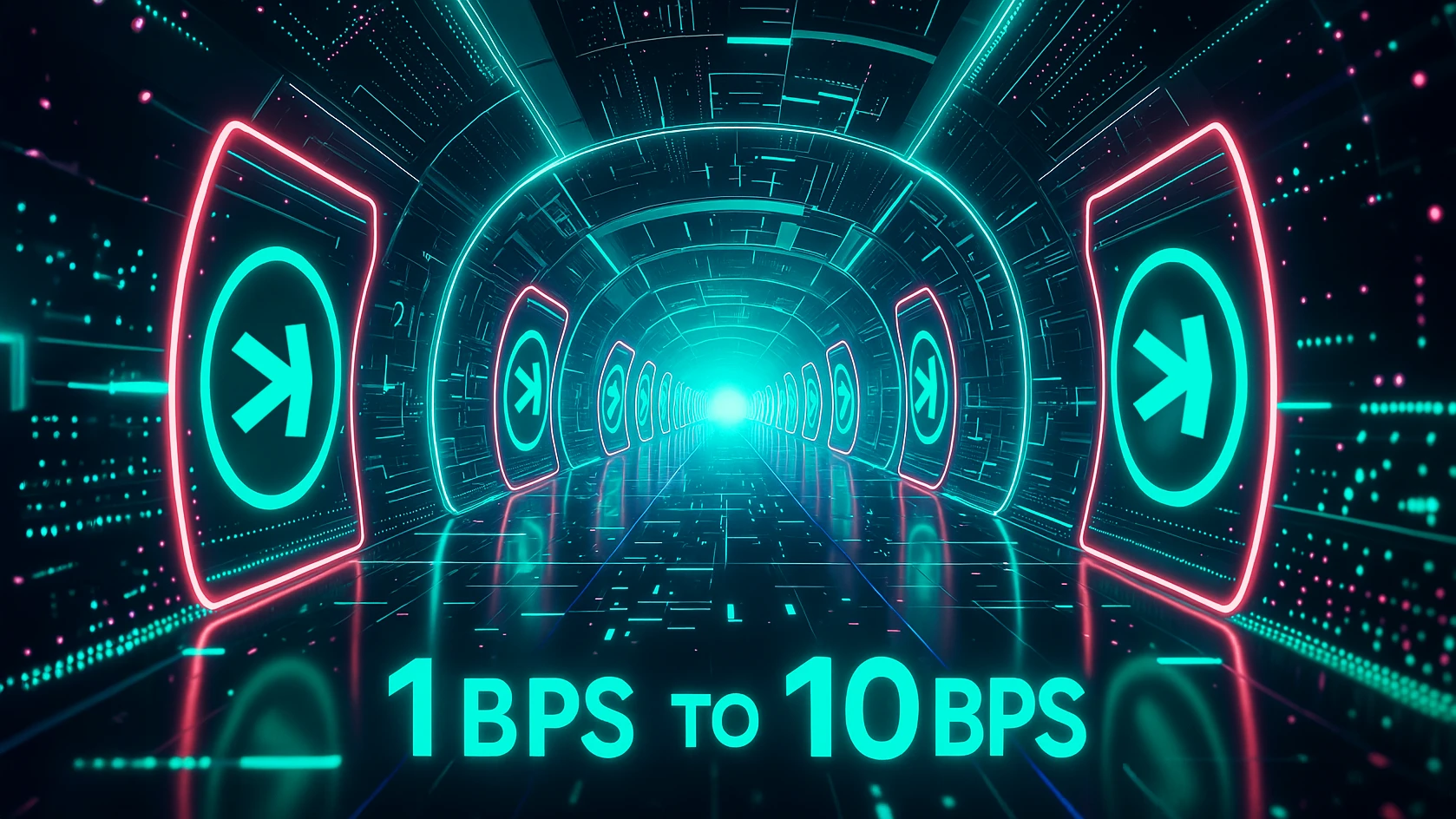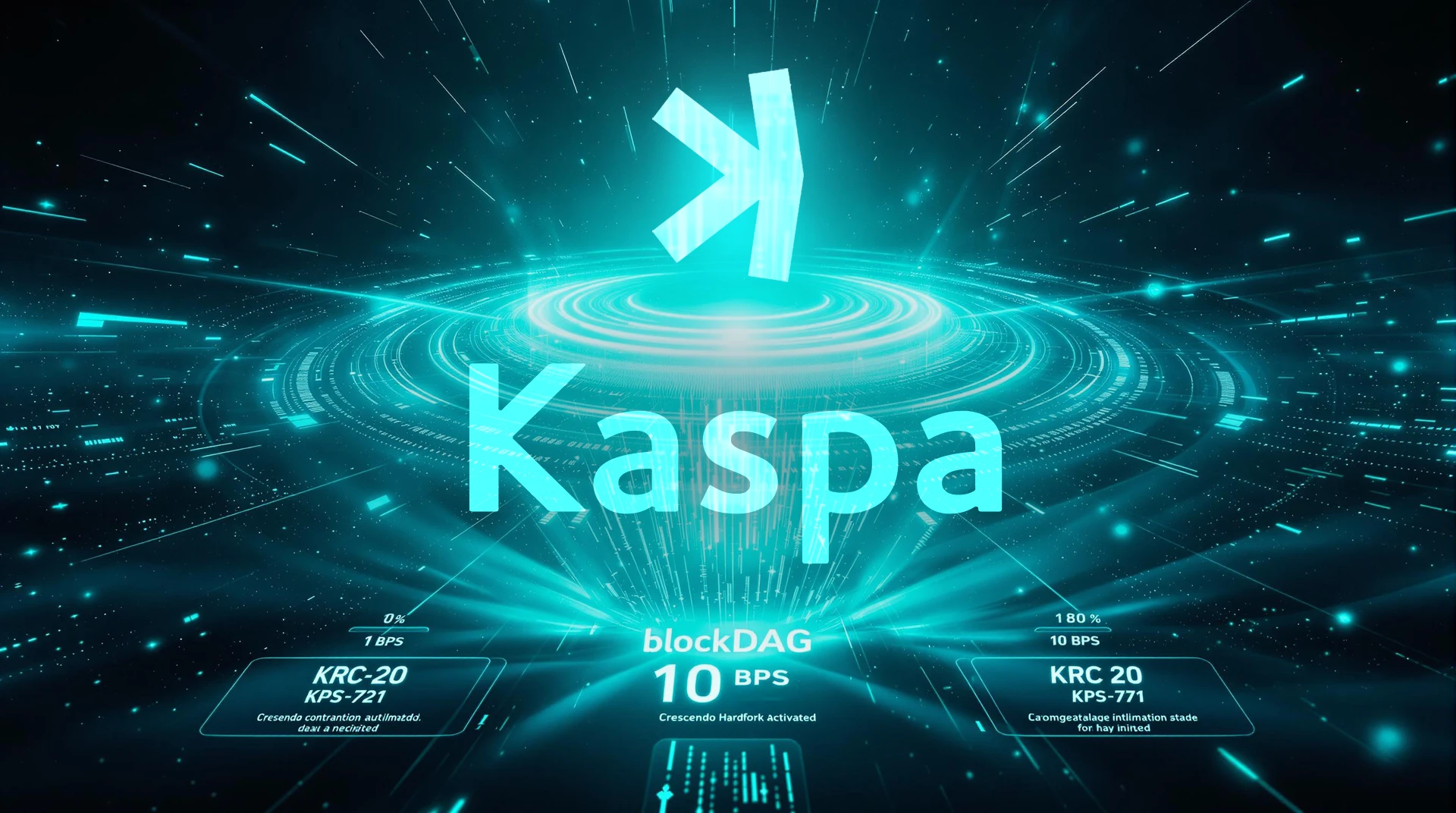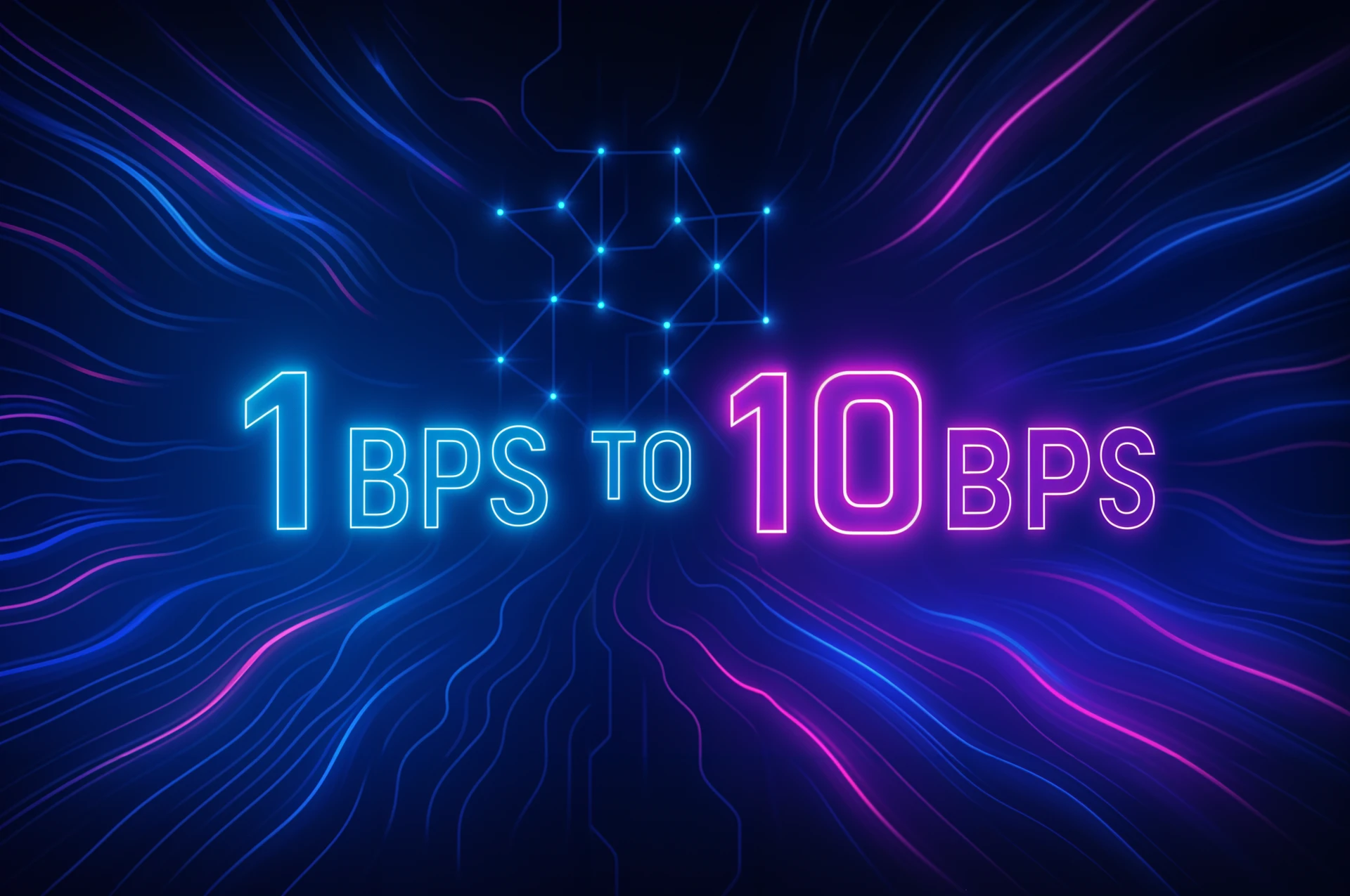Podcast Discussion: Deep Dive Into This Article.
The blockchain world is on the cusp of a significant transformation, and Kaspa is leading the charge. With the upcoming Crescendo hardfork, this innovative cryptocurrency is poised to leap from processing one block per second (1 BPS) to an impressive ten blocks per second (10 BPS). This upgrade isn’t just a minor tweak; it’s a potential game-changer that could redefine blockchain scalability and security.
This article dives deep into the Crescendo hardfork, exploring its technical underpinnings, market implications, and future potential. Whether you’re a crypto enthusiast, a blockchain developer, or an investor seeking the next big thing, this guide will provide you with the insights you need to understand how Kaspa’s upgrade could reshape the future of decentralized technology.
Understanding Kaspa’s Technical Evolution
To fully appreciate the significance of the Crescendo hardfork, it’s essential to understand Kaspa’s current infrastructure and the challenges it faces.
The Current Infrastructure
Kaspa operates on a proof-of-work (PoW) consensus mechanism, a cornerstone of blockchain security and decentralization. However, like many early PoW blockchains, Kaspa’s initial design had limitations in transaction throughput. The original 1 BPS system, while secure, restricted the network’s ability to handle a high volume of transactions.
- Proof-of-Work (PoW): A consensus mechanism requiring network participants to solve complex computational problems to validate transactions and create new blocks.
- 1 Block Per Second (BPS): The initial rate at which Kaspa’s blockchain processes new blocks, limiting transaction throughput.
- Scalability Challenges: The difficulty in increasing transaction throughput without compromising security or decentralization.
Compared to other blockchain networks, Kaspa’s initial 1 BPS placed it behind newer, more scalable solutions. The Crescendo hardfork aims to bridge this gap, bringing Kaspa into a new era of performance.

Smart Contract Integration
The upgrade sets the stage for advanced smart contract functionalities by integrating the KRC-20 and KRC-721 token standards. These standards have been under rigorous testing on testnet 11 since January 2024 and are set to become fully operational once the mainnet embraces the 10 BPS capability.
- KRC-20 and KRC-721: Token standards that enable the creation and management of fungible and non-fungible tokens (NFTs) on the Kaspa network.
- TestNet 11: A testing environment where the KRC-20 and KRC-721 token standards are being evaluated for functionality and compatibility.
- Smart Contract Functionality: The ability to execute self-executing contracts on the blockchain, enabling a wide range of decentralized applications.
This integration allows developers to build and deploy sophisticated decentralized applications (dApps) on Kaspa, expanding the network’s utility and attracting new users.
Layer 2 Scaling Solutions
In parallel, the integration of zkEVM for Layer 2 scaling is finalizing, ensuring that transactions can be executed with both efficiency and privacy. This allows Kaspa to offer Ethereum-like functionalities while maintaining the inherent security of a proof-of-work network.
- zkEVM: A Layer 2 scaling solution that uses zero-knowledge proofs to enable efficient and private transaction execution.
- Layer 2 Scaling: Techniques that offload transaction processing from the main blockchain to improve scalability and reduce transaction fees.
- Privacy Enhancement: The use of zero-knowledge proofs to protect the privacy of transactions and user data.
This dual focus on performance and security is particularly exciting. Faster transaction speeds mean that smart contracts can operate more efficiently, while the robust PoW consensus reassures users and developers that their transactions and contracts are secure against potential threats.

Market Impact and Industry Position
The Crescendo hardfork is not just a technical upgrade; it also has significant implications for Kaspa’s market position and industry recognition.
Regulatory Recognition
Recently, Kaspa received a “Made in USA” tag on CoinMarketCap, which has caught the attention of both institutional and retail investors. This label is more than just a marketing gimmick; it reflects growing regulatory interest and potential tax incentives aimed at proof-of-work cryptocurrencies in the U.S. As policies evolve, projects like Kaspa stand to benefit from a more favorable regulatory environment.
- “Made in USA” Tag: A designation on CoinMarketCap indicating that a cryptocurrency project is based in the United States, potentially attracting regulatory interest and investment.
- Regulatory Implications: The potential for favorable regulations and tax incentives for proof-of-work cryptocurrencies in the U.S.
- Investor Attention: Increased interest from both institutional and retail investors due to regulatory recognition.

Competitive Analysis
The community’s reaction has been overwhelmingly positive. Crypto enthusiasts and developers alike see the Crescendo hardfork as a pivotal moment that could reposition Kaspa as a major player in the blockchain space. With the potential to rival established proof-of-work cryptocurrencies, especially in an environment where Bitcoin’s market dominance is facing challenges, Kaspa is drawing comparisons to both Bitcoin and Ethereum.
- Bitcoin and Ethereum Comparison: Kaspa’s blend of high transaction speed and smart contract capability is sparking conversations about a new era in blockchain technology.
- Market Positioning: The potential for Kaspa to gain market share and attract new users due to its improved performance and functionality.
- Community Response: Overwhelmingly positive feedback from crypto enthusiasts and developers who see the Crescendo hardfork as a game-changer.
Market analysts are closely monitoring the chain’s ongoing development and the team’s progress, with many speculating that the upgrade featuring improved throughput and enhanced smart contract capabilities could trigger significant growth in value and adoption. Investors utilizing dollar cost averaging (DCA) strategies may be positioning themselves strategically ahead of these anticipated developments.
Future Roadmap and Scaling Potential
Kaspa’s vision doesn’t stop at 10 BPS. The roadmap includes even more ambitious scaling targets.
Beyond 10 BPS
Future upgrades aim to push the limits to 32 BPS or even 100 BPS. This is where the DAGKnight protocol comes into play. Designed to optimize blockDAG consensus, DAGKnight could potentially enable the network to handle unprecedented volumes of transactions, further solving the notorious blockchain trilemma: the challenge of balancing scalability, security, and decentralization.
- DAGKnight Protocol: A consensus mechanism designed to optimize blockDAG consensus and enable higher transaction throughput.
- Blockchain Trilemma: The challenge of balancing scalability, security, and decentralization in blockchain networks.
- Scaling Targets: Ambitious plans to increase transaction throughput to 32 BPS or even 100 BPS in future upgrades.

Real-World Applications
Imagine a world where blockchain networks not only secure billions of dollars in assets but also run complex decentralized applications without hiccups. For developers, this means a platform that could rival the capabilities of Ethereum while offering the security assurances of Bitcoin-like PoW systems. For everyday users, it means smoother transactions and enhanced reliability, making blockchain technology more accessible and practical than ever before.
- DeFi Implementation: Potential for faster lending, borrowing, and trading operations on decentralized finance platforms.
- Supply Chain Management: Use cases for tracking and managing goods and materials across the supply chain.
- Gaming and Digital Identity: Applications for creating and managing digital assets and identities in gaming and other industries.
The integration of smart contracts on a high-speed, secure network like Kaspa opens the door to a myriad of use cases.
Technical Implementation and Security
The technical implementation of the Crescendo hardfork is critical to its success.
Network Architecture
The upgrade involves optimizing the blockDAG consensus mechanism, implementing robust security measures and fail-safes, and establishing performance monitoring systems.
Performance Monitoring Systems: Establishing systems to monitor network performance and identify potential issues.
BlockDAG Consensus Optimization: Enhancing the efficiency and scalability of the blockDAG consensus mechanism.
Security Measures and Fail-Safes: Implementing robust security protocols to protect the network against potential attacks.
Developer Considerations
Developers need to understand the smart contract deployment process, integration guidelines, and resource optimization strategies.
Resource Optimization Strategies: Techniques for optimizing smart contracts and applications to minimize resource consumption.
Smart Contract Deployment Process: Guidelines for deploying smart contracts on the Kaspa network.
Integration Guidelines: Best practices for integrating with the Kaspa network and utilizing its features.

Practical Implications
The Crescendo hardfork has practical implications for both developers and users.
For Developers
The upgrade opens up new opportunities in DApp development, enhances transaction processing capabilities, and provides access to a range of tools and resources.
- New DApp Opportunities: The ability to build and deploy more complex and scalable decentralized applications.
- Enhanced Transaction Processing: Faster transaction speeds and lower fees for DApp users.
- Tools and Resources: Access to a range of tools and resources to support DApp development on the Kaspa network.
For Users
Users can expect improved transaction speeds, enhanced security features, and a better overall user experience.
Better User Experience: A more seamless and user-friendly experience for interacting with the Kaspa network.
Improved Transaction Speeds: Faster transaction confirmation times and reduced congestion.
Enhanced Security Features: Robust security protocols to protect user data and assets.
Conclusion
Kaspa’s Crescendo hardfork is not just an incremental upgrade; it’s a transformative leap forward for proof-of-work blockchains. By combining a ten-fold increase in transaction speed with advanced smart contract capabilities and a robust roadmap for future scaling, Kaspa is positioning itself to be a key player in the next generation of blockchain technology.
This upgrade, which has been years in the making, is set to deliver significant improvements that could redefine the landscape for both developers and users. With the market already buzzing about Kaspa’s tech stack, it’s an exciting time to be following the project. Now could be the perfect time to DCA for investors to position themselves for this huge upgrade. The countdown to the mainnet upgrade has begun, and all signs point to a future where Kaspa leads the charge in bridging the gap between speed, security, and decentralized functionality. Keep an eye on Kaspa as it continues to evolve and potentially disrupt the blockchain landscape.

This article reflects the opinions of the publisher based on available information at the time of writing. It is not intended to provide financial advice, and it does not necessarily represent the views of the news site or its affiliates. Readers are encouraged to conduct further research or consult with a financial advisor before making any investment decisions.



